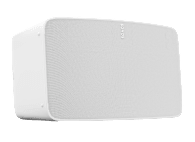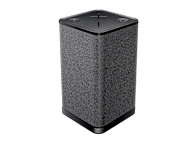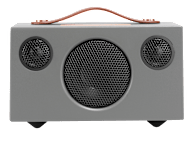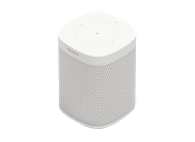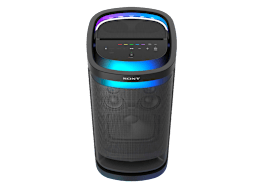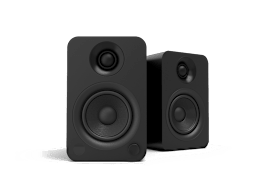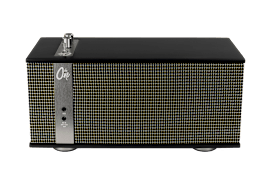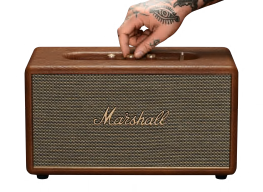Best Wireless Speakers for Great Sound
These models from Edifier, Sonos, Ultimate Ears, and more delivered best-in-class sound quality in Consumer Reports' testing
When you shop through retailer links on our site, we may earn affiliate commissions. 100% of the fees we collect are used to support our nonprofit mission. Learn more.

When you’re choosing a wireless speaker, sound matters. Whether you listen to Billie Eilish or Billie Holiday, you want a model that helps you hear every detail on the original recording.
That’s why our audio testers work tirelessly to evaluate sound quality, then give it more weight in our ratings than factors such as ease of use and versatility.
The wireless speakers listed below all offer great sound. Some are a bit pricey, but unlike other electronic devices, speakers tend not to go obsolete quickly. That means you can sit back and enjoy them for years to come.
Don’t feel left out if you’re willing to sacrifice some sound quality to find speakers that are ideal for fitting on a desk at the office, for blasting high-volume tunes at a party, for going poolside with a promise of water resistance—or just to fit a tight budget. Consumer Reports has test results to share on those, too.
The Edifier S1000MKII is simply the best-sounding speaker in our ratings, earning a rare Excellent score for sound quality. Its high frequencies are clear and smooth, and its bass is impactful but also musical, so you can tell the difference between, say, an upright bass and an electric Fender Jazz Bass.
But the real magic lies in the Edifier’s midrange, where you can hear the texture of voices and instruments. Placed properly in a room, a stereo pair of Edifiers seems almost like a hologram generator, creating the convincing illusion that the musicians are right there with you.
“The Edifiers produce a three-dimensional image,” says Elias Arias, head of our speaker testing program. “It has dimension. It has substance.”
That means if you’re listening to “I’ve Got You Under My Skin,” it’s easy to sense how far Frank Sinatra is from the piano, and even that he’s standing up instead of sitting down.
The Edifiers aren’t the most versatile speakers in CR’s ratings. They don’t have multiroom capability, for instance, though they do offer a variety of connections—from robust Bluetooth pairing to RCA and digital jacks. But for many people that’s a reasonable trade-off for speakers that sound this good.
As the company’s largest and most expensive model, the Sonos Five, which is only slightly changed from the previous Play:5, is an instant classic. It achieves stereo sound from a single, sizable box that can serve as the heart of a flexible multiroom system, routing music throughout your home.
Our testers report that the Sonos Five simply sounds spectacular, with solid bass and crystalline trebles that let you hear the subtle detail of instruments ranging from the growl of a double bass to the shimmer of a ride cymbal. Our testers give the Five an Excellent rating for sound quality—our rarely bestowed top grade—when two Fives are paired in stereo.
Please note that Sonos’ flagship is WiFi-only. You can’t just pair it to your phone through Bluetooth. Instead, you control streaming through the Sonos app.
The splashproof Ultimate Ears Hyperboom is the best-sounding portable speaker in our ratings.
No, it won’t fit in a backpack, and the pedestrian handle doesn’t beg you to carry it like a boom box. But unlike the Edifier and Sonos speakers above, it has a rechargeable battery that encourages you to take it to the patio or even car camping.
The Hyperboom works well at home, too. The vertical orientation doesn’t take up much space on a table or shelf, and the subdued styling allows it to blend into a living room better than most portable speakers.
The Hyberboom can’t quite match the pure musical performance of the very best wireless speakers, but its Very Good rating on sound quality makes it stand out from its portable peers.
Our testers report that the bass is powerful, the midrange is clean, and the speaker is plenty loud indoors or out, so you’ll no doubt enjoy the Hyperboom when you’re grooving to Jimi Hendrix’s “Purple Haze” while cooking burgers. But when you’re in a mellower mood, the device can still deliver delicate details in the midrange and high frequencies that will help you savor a Yo-Yo Ma cello solo.
If you want great sound in a cool and compact package, check out the Audio Pro T3+. It features attractive retro styling with a wooden enclosure, a slick leather handle, and a whimsical “face” that kinda looks like a koala bear.
It also ranks among the finest-sounding truly portable speakers we’ve tested, with a clean midrange, extended high frequencies, and a decent amount of bass impact, given the small size. Our testers find it very easy to use, with intuitive pairing and prominent physical controls. The claimed battery life of 30 hours is another plus when you’re on the go.
If the T3+ sounds intriguing and you’re willing to spend a little more for a larger, multiroom speaker that delivers even better sound quality, check out its larger sibling, the Audio Pro C10Mk II.
With the departure of Google’s great-sounding Home Max, the Sonos One is now the best-sounding model in our smart speaker ratings. (We test smart speakers separately, though the evaluation process for sound quality is similar.)
The Sonos One’s sound is clear and detailed, so you can hear nuances like a singer breathing or the creaking of piano pedals. The bass is tight and impactful in a way that’s likely to get your foot tapping, though the One’s modest size prevents it from delivering bass that’s super-deep.
And two Sonos Ones are better than one, according to our testers. Because the speaker is monophonic, the sense that the musicians are in the room with you improves a lot when two of the speakers are stereo-paired.
On the smart speaker side, the Sonos One is one of the few models that works with multiple digital assistants: You can use voice control through Amazon’s Alexa and Google Assistant, and stream music using Apple’s AirPlay. And, of course, the One can slot into a versatile multiroom system with other Sonos speakers.
If you need a portable Bluetooth smart speaker with great sound, the Sonos Move sounds quite similar to the One but costs quite a bit more.
This bargain-priced Ikea speaker is not only the most inexpensive way into the Sonos ecosystem but also the best-sounding cheap speaker we’ve tested.
Our testers report that the second-generation Symfonisk sounds and performs almost identical to its predecessor, which was $20 less expensive. The model also sounds like its Sonos brethren, with a clear treble that makes cymbals shimmer, a balanced and detailed midrange that lets you hear the nuance in Harry Styles’ vocals, and bass that’s musical if not overly deep.
No, the Symfonisk’s sound quality doesn’t quite equal that of the more expensive Sonos One, but the gap is so small that most casual listeners won’t notice the difference. And, as with the Ones, a stereo pair of Symfonisk speakers can yield a wider sound stage and make it seem even more like the performers are in the room with you.
The Symfonisk works like a Sonos speaker in the company’s multiroom systems. With the easy-to-use Sonos smartphone app, you add the device to your home setup and a couple of people can listen to Kelly Clarkson in the kitchen while another group blasts Ariana Grande in the basement. Keep in mind that the Symfonisk is an indoor pet; it needs to be plugged into an outlet, and like Sonos’ other home speakers, it lacks Bluetooth capability, so it needs WiFi to work.

















